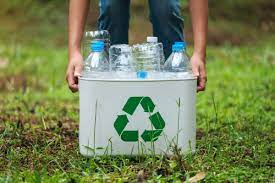Recycling polyethylene terephthalate (PET) plastics plays a significant role in addressing the growing challenges of plastic waste while supporting the goals of a circular economy and conserving valuable resources. PET is one of the most widely used plastics in packaging, particularly for beverage bottles, food containers, and textiles. Its durability, lightweight nature, and versatility make it a preferred material across industries. However, its extensive use also results in massive amounts of waste if not managed responsibly. recycle PET helps to close the loop of production and consumption, ensuring that materials are continuously reused rather than discarded.
The Role of PET Recycling in Circular Economy
The circular economy emphasizes reducing waste by reusing, recycling, and regenerating materials to extend their lifecycle. PET recycling fits seamlessly into this framework because it transforms used plastics into raw materials that can be reintroduced into the production cycle. Unlike single-use systems, recycling ensures that PET items such as bottles and containers do not end up in landfills or oceans but instead are collected, processed, and turned into valuable products.
By keeping PET plastics in circulation, the circular economy model reduces dependency on virgin plastic production derived from petroleum. This not only saves natural resources but also cuts down on greenhouse gas emissions associated with the extraction and processing of fossil fuels. PET recycling demonstrates how industries and communities can shift from a linear “take, make, dispose” model to a sustainable “make, use, recycle” cycle.
Resource Conservation Through PET Recycling
Recycling PET plastics significantly conserves resources at multiple levels. First, it reduces the demand for crude oil and natural gas used in producing virgin plastics. Every ton of recycled PET saves substantial amounts of energy compared to producing the same quantity from raw petrochemical sources. Second, it conserves water and energy resources during manufacturing, as recycling processes require less input compared to primary production.
In addition to conserving raw materials, recycling reduces pressure on waste management systems. Landfills are limited in capacity and contribute to environmental issues such as soil contamination and methane emissions. Recycling PET alleviates this burden by diverting large volumes of plastic waste away from disposal sites and repurposing them into useful materials. This approach conserves both environmental and economic resources, ensuring more efficient use of materials already in circulation.
Applications of Recycled PET in Various Industries
Recycled PET, often referred to as rPET, is highly versatile and can be used in diverse industries. In packaging, rPET is reintroduced into new bottles, food-grade containers, and protective packaging materials. The textile industry also benefits from PET recycling, as rPET fibers are used in producing clothing, upholstery, carpets, and sportswear. Additionally, construction materials, automotive components, and household products are increasingly manufactured using recycled PET.
These applications not only demonstrate the economic potential of recycling but also reinforce the idea that plastic waste can be transformed into resources for future use. By promoting the use of rPET in industries, recycling supports job creation, economic growth, and innovation while addressing environmental concerns.
Environmental Benefits of PET Recycling
The environmental benefits of PET recycling are substantial. Recycling reduces plastic waste in oceans, rivers, and landscapes, protecting ecosystems and wildlife. It also cuts carbon emissions, as producing recycled plastic generates fewer greenhouse gases than producing virgin plastic. Furthermore, recycling contributes to global sustainability goals by promoting responsible consumption and production patterns.
Communities and governments that adopt PET recycling initiatives also reduce the need for incineration, which releases harmful pollutants into the atmosphere. By focusing on recycling, societies make progress toward cleaner air, reduced pollution, and improved public health.
Conclusion
Recycling PET plastics is a cornerstone of building a sustainable future. By supporting circular economy principles and conserving valuable resources, PET recycling transforms waste into opportunity. Its applications across industries showcase how innovation can reduce environmental impact while creating economic value. The integration of PET recycling into everyday practices highlights the importance of shared responsibility among individuals, communities, and industries. As awareness and technology continue to grow, recycling PET will remain a key solution for minimizing plastic waste, conserving resources, and supporting a more resilient and sustainable world.

